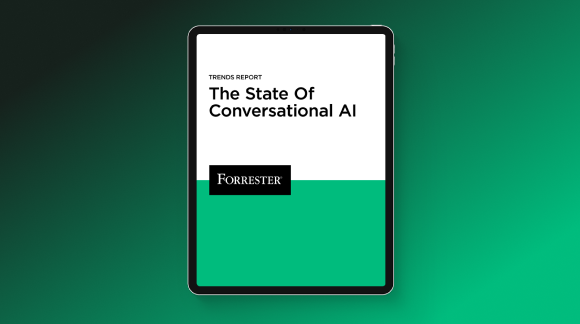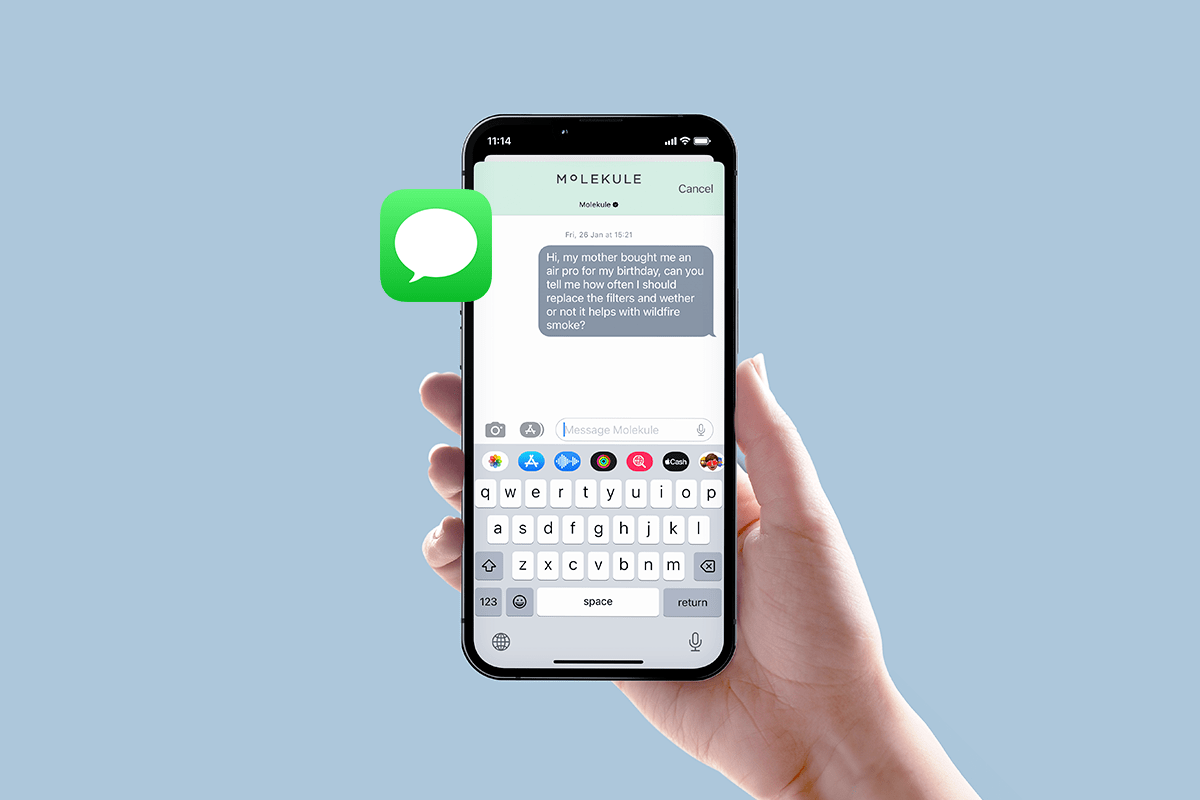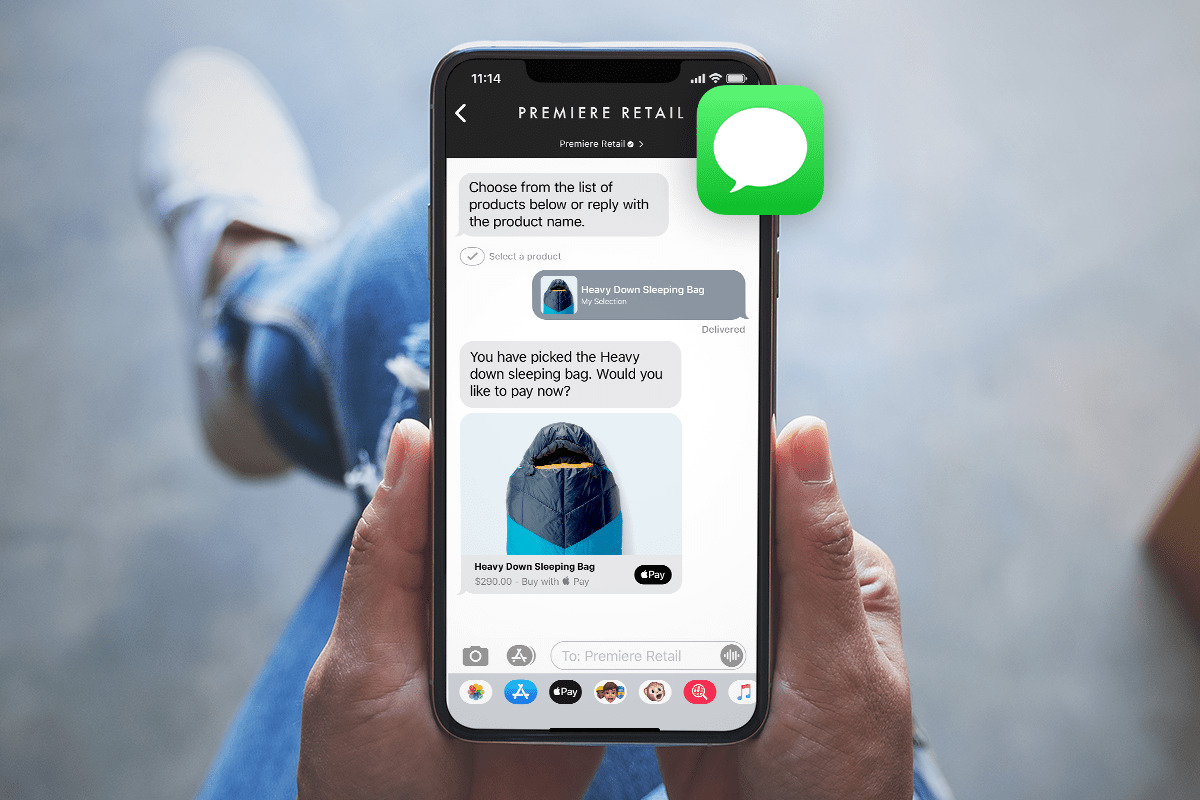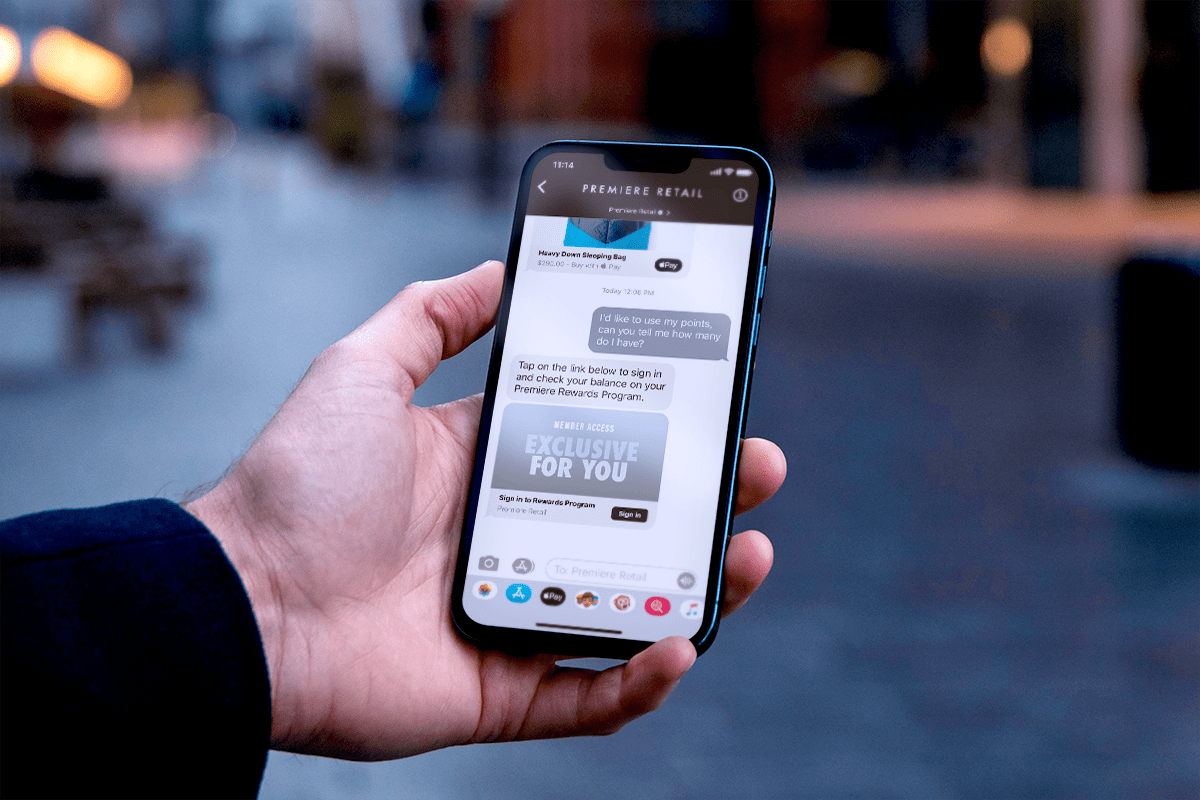Your CX Strategy Should Include Apple Messages for Business. Here’s Why.
A common piece of marketing advice says you should “Meet your customers where they’re at.” These days, there are something like 23 billion text messages sent daily across the world, so your customers are probably on their phones.
Twenty years ago, you could be forgiven for thinking that text messaging was a method of communication reserved for teenagers sending each other inscrutable strings of hieroglyphic emojis, but more and more business is being done this way. It’s now relatively common for contact centers to offer customer support over chat, which means text messaging has emerged as a vital customer service channel.
In this piece, we will focus specifically on one text messaging service, Apple Messages, and how it can be leveraged to create personalized and efficient customer interactions. Along the way, we’ll talk about some of the exciting work being done to leverage AI assistants through text messaging so you can stay one step ahead of the competition.
The Advantages of Apple Messages in Customer Service
Here, we’re going to discuss the myriad advantages conferred by using Apple Messages. But before we do that, it’s worth making sure we’re all on the same page by discussing what Apple Messages is in the first place.
You probably already know that Apple’s line of iPhones supports text messaging, like all mobile phones. But Apple Messages is a distinct product designed to allow businesses like yours to interact with customers.
It makes it easy to set up a variety of touchpoints, like QR codes, an app, or an email message, through which customers can make appointments, raise (and resolve) problems, or pay for your services.
There are many ways in which utilizing Apple Messages can help you, which we’ll discuss now.
Personalization at Scale
First, tools like Apple Messages allow businesses to personalize communication at a scale and sophistication never seen before.
This personalization is achieved with machine learning, which has consistently been at the forefront of automated content customization. For instance, Netflix is well-known for identifying trends in your viewing habits and using algorithms to recommend shows that align with your preferences. Now, thanks to generative AI, this technology is making its way into text messaging.
Yesterday’s language models often lacked the flexibility for personalized customer interactions, sounding “robotic” and “artificial.” Modern models significantly bolster agents’ ability to tailor their conversations to the specific context. Though they do not completely replace the unique human element, for a contact center manager focused on enhancing customer experience, this represents a significant advancement.
Speed and Convenience
Another place where text messaging shines strategically is its speed and convenience. Texting became popular in the first place because it streamlined the communication process. But, unlike with a phone call, this communication could be done privately, without disturbing others.
Customers needing to troubleshoot an issue while they’re on the bus or somewhere public will likely want to do so with a chat interface. This provides the opportunity to
High Engagement Rates
One aspect of a customer communication strategy you’ll have to consider is what the likely engagement with it will be. Text messaging, particularly through platforms like Apple Messages, boasts higher open and response rates than other channels.
The statistics backing this up are compelling – 98% of text messages sent to customers are opened and eventually read, with fully 90% of them being read just three minutes after being received. Even better, nearly half (48%) of text messages sent to customers get responses.
On its own, this indicates the enormous potential for text-messaging strategies to get your customers talking to you, but when you consider the fact that only around a quarter of emails are opened and read, it’s hard to escape the conclusion that you should be investing seriously in this channel.
Leveraging AI in Apple Messages
Artificial intelligence, especially large language models, are all the rage these days, and they’re being deployed in text messages as well. Since Apple Messages allows you to use your own bots and virtual agents, it’s worth spending a few minutes talking about how generative AI can help.
There are a few different ways in which an AI customer service agent can streamline your customer service operations.
The simplest is by directly resolving issues—or helping customers to directly resolve their own issues—with little need for intervention by human contact center agents. There are many problems that are too involved for this to work, of course, but if all a customer needs to do is reset a password it could well be sufficient.
(Note, however, that Apple Messages requires you to include an option allowing a customer to escalate to a human agent. As things stand today, that part is non-negotiable).
Even when a human agent needs to get involved, however, generative AI can help. The Quiq conversational CX platform has a tool called “Quiq Compose”, for example, which can help format replies. An agent can input a potential reply with grammatical mistakes, misspellings, and a lack of warmth, and Quiq Compose will work its magic to turn the reply into something polished and empathic.
Improving Contact Center Performance with Apple Messages
Assuming that you’ve set up Apple Messages and supercharged it with the latest and greatest AI customer service agent, what can you expect to happen? That’s the question we’ll address in these sections.
Reducing Response Times
When combined with AI assistants and related technologies, Apple Messages can significantly reduce response times and increase customer satisfaction. It’s well known that contact center agents are often juggling multiple conversations at a time, and it can be hard to keep it all straight. But when they’re backed up by chatbots, Quiq Compose, etc., they can handle this volume in less time than ever before.
Generative AI is now good enough to carry on relatively lightweight interactions, answer basic questions, and help solve myriad issues; this, by itself, will almost certainly reduce response times. But it also means that agents can pivot to focusing on the thorniest, highest-priority tasks, which will further drive response times down.
Increasing Resolution Rates
For all the reasons just mentioned, AI assistants can increase resolution rates. Part of this will stem from the fact that fewer customers will fall through the cracks or end their calls early. But it will also come from agents being less rushed and more able to work on those tickets that really require their attention.
This is easy to see with an example. Imagine two people, each with daunting lists of chores they’re not sure they can finish. One of them is all on their own, while the other can outsource the most banal 30% of their tasks to robots.
Who would you bet on to have the highest chore resolution rate?
Implementing Apple Messages in Your Contact Center
The basic steps for getting started with Apple Messages are easy to follow.
First, you have to register your account. We’ve been using the name “Apple Messages” throughout this piece, but its full name is “Apple Messages for Business,” and your account must be tied to an actual business to be eligible.
Then, you have to create an account where your branding assets will live and where you’ll select the Messaging Service Provider (MSP) that you’d like to use. Apple will then review your submission, and, after a few days, will tell you whether you’ve been approved. As you’re planning your text messaging efforts, make sure that you’re factoring in the approval process.
With that done, you’ll have to start thinking in detail about your customer’s journey by filling out a Use Case template. You need to outline what you hope to achieve with text messaging, then decide on the entry points you want to offer your customers.
Next up, you’ll work out the user experience. This involves creating the automated messages you want to use, configuring Apple Pay if relevant, and designing customer satisfaction surveys.
Afterward, you need to set up metrics to figure out how your text messages are landing and whether there are things you can do to improve. If you’ve read our past articles on leveraging customer insights, you know how important data is to your ultimate success.
Last of all, Apple will spend a week or two reviewing everything you’ve accomplished in these steps and deciding whether anything else needs to be tweaked. Assuming you pass, you’re ready to go with Apple Messages!
Final Thoughts on Why Your Business Should Use Apple Messages
Contact centers are increasingly coming to resemble technology companies, and the rise of Apple Messages is a great illustration of that. Apple Messages makes it easy to deploy AI assistants to interact with your customers, thereby reaping the enormous benefits of automation.
And speaking of the benefits of automation, check out the Quiq platform while you’re at it. We’ve worked hard to suss out the best ways of applying artificial intelligence to contact centers, and have built a product around our findings. We’ve helped many others, and we can help you too!




